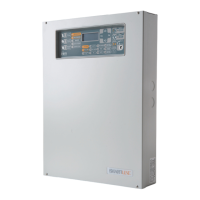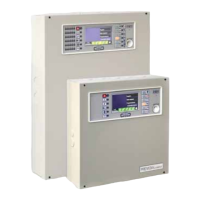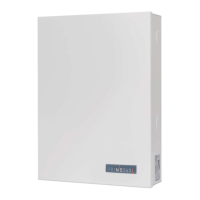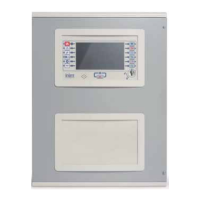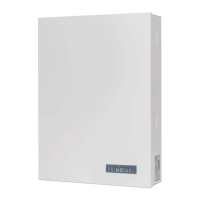Installation Manual
Troubleshooting 49
9.5 SmartLoopNET Fault
(error in the token ring network configuration)
Figure 45 - Access Denied message
This message appears when:
• The SmartLoopNET board is not operating properly.
- Check that the board is inserted properly.
- Relaunch the auto-configuration phase.
- Ensure that the blue LED [Danger:3] stays On while this phase is running, and that the NODE A
[Danger:5] and NODE B [Danger:4] activity LEDs blink briefly to indicate communication attempts
on both branches.
If no LEDs go On (including the IN-NET LED), the board may be damaged and might need
replacing.
• Duplicated address (address assigned to more than one control panel)
- Access the
Main menu from the panel.
- Select
Programming>Configuration>View Configuration>NET
(Programming>Configuration>View Configuration>NET).
- Check the address of each panel in the token-ring network and rectify the error.
• Network Loop open
The token-ring network cabling must be closed properly otherwise the system will be unable to
configure properly.
Check the integrity of the ring cabling, as follows:
- Restore all the panels in the token-ring network to address O.
- Remove the network terminal boards [Danger:2 and 6] from the SmartLoopNET board of one of
the panels and check the continuity of wiring in the D+ circuit (between D+ poles of ports A and
B), D-circuit (between D- poles of ports A and B) and the two GND.
9.6 NET Link ALARM-A
Wiring fault in the emergency alarm ring circuit.
• Check the integrity of the circuit wiring of the panel that generated the event.
- Using a multimeter or similar tool, measure the voltage over ALARM-A “+” and “-” terminals.
Under normal operating conditions the value should be approximately 2.5 V.
If the value is nearer to 5 V, the connection with terminals ALARM-B “+” and “-” of the adjacent
control panel is interrupted.
- Check the integrity of the connection.
If the voltage is nearer to 0 V, there may be a short-circuit between the two poles that connect the
ALARM-A “+” and “-” terminals of the board concerned with the ALARM-B “+” and “-” terminals of
the antecedent board.
Note: If the emergency alarm loop is not used, it must be disabled via software, otherwise it will signal
a persistent fault condition.
Access to Network Denied

